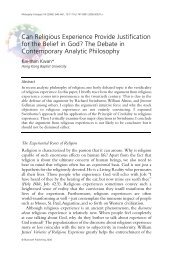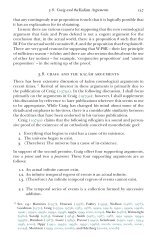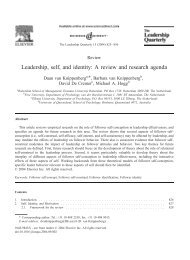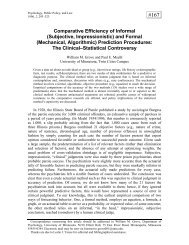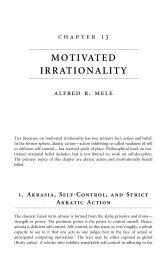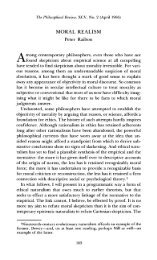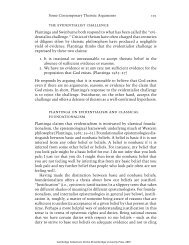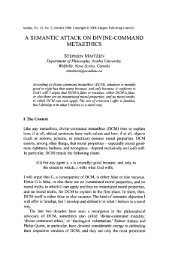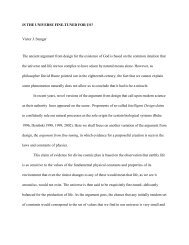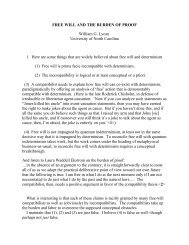Atheism and Theism JJ Haldane - Common Sense Atheism
Atheism and Theism JJ Haldane - Common Sense Atheism
Atheism and Theism JJ Haldane - Common Sense Atheism
Create successful ePaper yourself
Turn your PDF publications into a flip-book with our unique Google optimized e-Paper software.
Reply to Smart 179<br />
of self-replication is novel <strong>and</strong> not explicable by reference to lower-level<br />
entities <strong>and</strong> properties.<br />
St<strong>and</strong>ard evolutionary explanations posit replication as spontaneously arising<br />
some three or four billion years ago in a form more primitive than DNA.<br />
Needless to say there is no direct evidence of this, rather it is an assumption<br />
of naturalistic theory. The behaviour of DNA itself is acknowledged to be so<br />
qualitatively advanced that it is unimaginable that it could just have sprung<br />
into being uncreated. So the task is to show how DNA could have arisen<br />
from more primitive replication, say RNA, <strong>and</strong> how that could have resulted<br />
from non-replicating systems. Although molecules exhibit dynamic properties<br />
they are not normally self-duplicating, so the question remains: how could<br />
replication <strong>and</strong> hereditary variation arise?<br />
Talk of ‘proto-replicators’ is vulnerable to a version of the dilemma with<br />
which I challenged the claim that intentionality arose from protorepresentation.<br />
Representing or replicating very many features is certainly different from<br />
representing or replicating very few, but ( pace Smart’s remarks in his reply,<br />
chapter 3, p. 156) it is a difference of the wrong kind so far as the needed<br />
explanation is concerned. Low level is not no level, <strong>and</strong> it is the jump from<br />
none to some that needs to be effected. I conclude, a priori, that this gap is<br />
one of kind not quantity. The emergence of reproductive beings is radical <strong>and</strong><br />
thus by definition not naturalistically explicable. If natural explanations were<br />
the only sort available we might despair of underst<strong>and</strong>ing. But there is another<br />
way of accounting for the emergence of novel entities as when a painter<br />
brings together quantities of powder suspended in oil <strong>and</strong> fashions a likeness<br />
of a sitter. Such is the style of explanation I offer of the emergence of life.<br />
Like the portrait it is the work of creative intelligence.<br />
I have already touched upon the question of how mindedness introduces a<br />
domain distinct from that of physical properties <strong>and</strong> relations. The character<br />
of this difference has an important part to play in the extended argument<br />
(schematized in figure 4.1B) from thought <strong>and</strong> language to the existence of<br />
God as source of conceptual activity. Smart’s rejoinder is principally addressed<br />
to the premiss concerning intentionality. Since I remain attached to what<br />
I argued earlier, I suggest that readers compare what each of us has had to say<br />
on the matter <strong>and</strong> draw their own conclusions. I would only add by way of<br />
encouragement that the issue of intentionality is of immense interest <strong>and</strong><br />
importance in its own right.<br />
3 Metaphysical Matters<br />
Thus far, the left-h<strong>and</strong> side of figure 4.1A has not been mentioned. The<br />
cosmological reasoning set out in section 6 of chapter 2 is really a presentation



